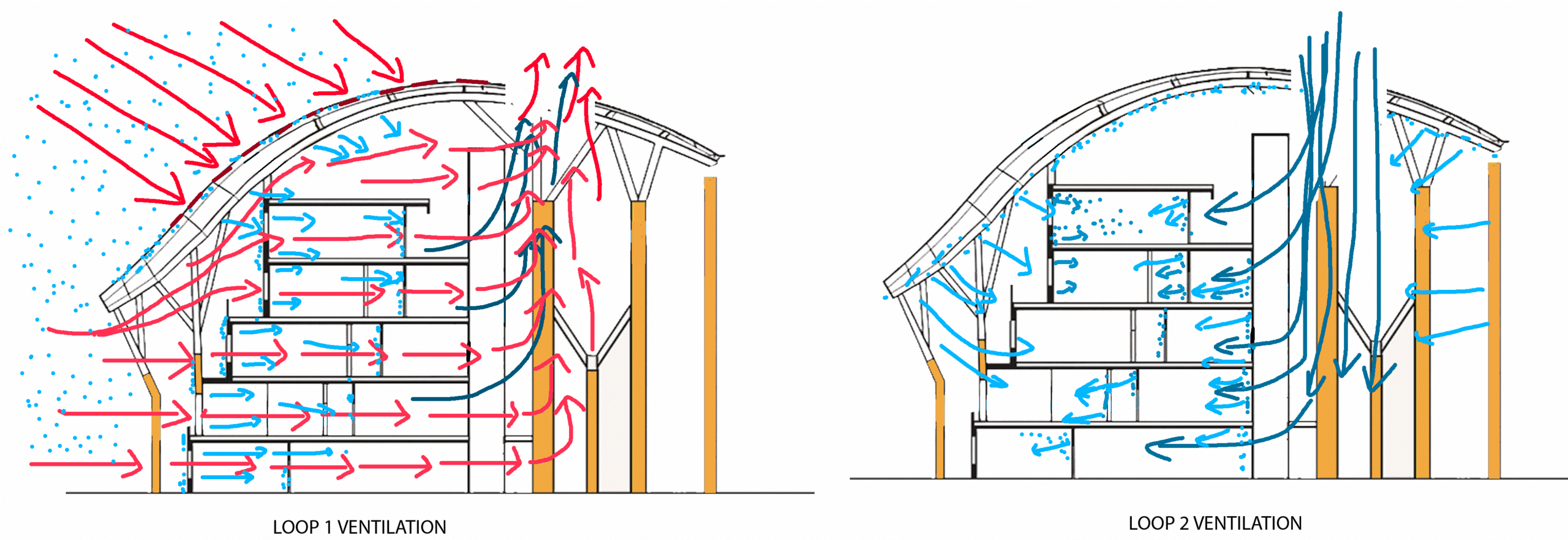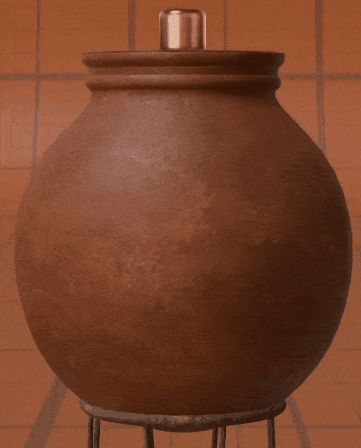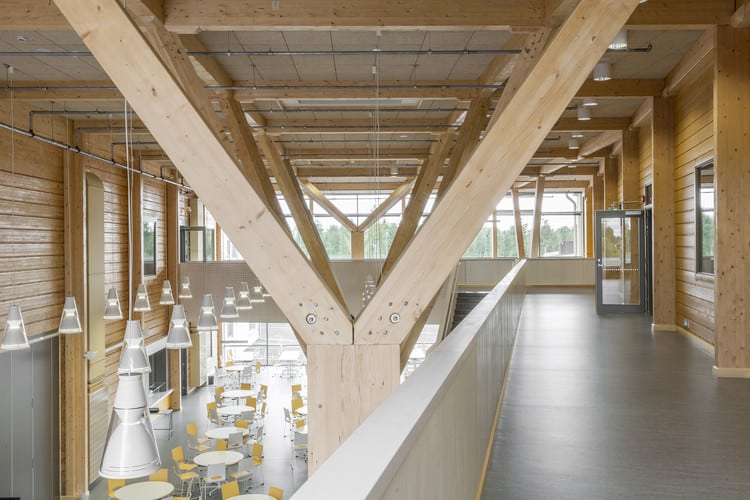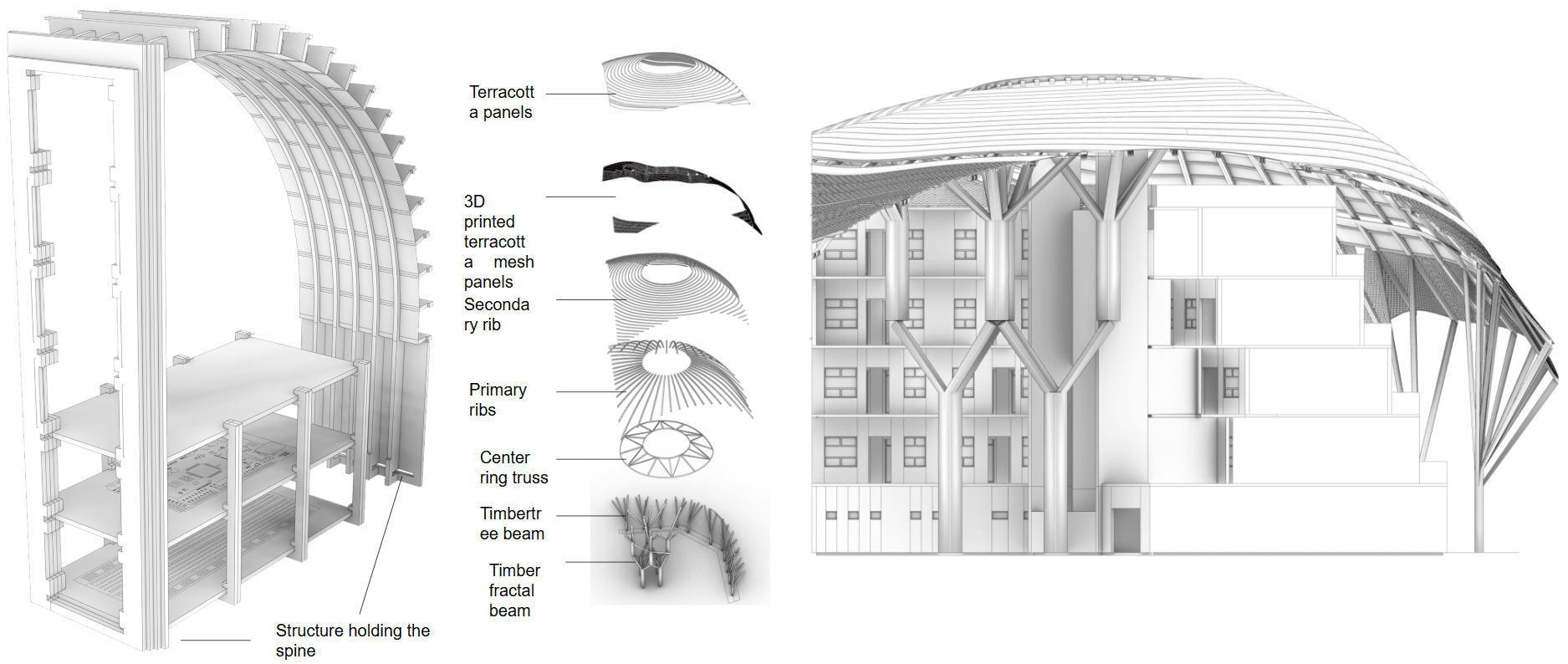Introduction
This project explores a double landscape approach, bridging a student accommodation in the city with an ecological extraction site in the Collserola foothills. It establishes a material and climatic dialogue between the two contexts: one as a site of inhabitation, the other as a site of making. At its core is a breathing terracotta shell that passively regulates humidity and temperature through diurnal loops. The extraction site provides locally sourced clay and timber, reinforcing the project’s commitment to circular material flows, environmental responsiveness, and architectural ecosystems rooted in both site and season.
Phenomenon + Concept
What and how does your phenomenon work ?
The phenomenon is humidity regulation through a breathable terracotta envelope operating in two passive climate loops. Loop 1 (Day): Warm, humid air enters and the terracotta walls absorb moisture, while rising heat vents out through the central oculus via the stack effect. Loop 2 (Night): Cool, dry air flows in and rehydrates the terracotta, releasing stored moisture into the interior. Together, these cycles regulate indoor humidity between 50–65% and reduce temperature swings by ±3–4°C, creating comfort without mechanical systems.

The main materials and its properties



Phenomenon in Space (Machine Room)

The core phenomenon of the SteamSense system relies on a dynamic feedback loop that regulates humidity by integrating steam generation, airflow circulation, and moisture absorption. Through continuous monitoring and real-time adjustments, the system maintains optimal indoor humidity levels for a healthier and more comfortable environment.
Phenomenon Effect on Body

The phenomenon of regulated humidity between 50–65%, as facilitated by the terracotta envelope in your project, directly benefits the human body in the following way:At optimum humidity (40–60%), airborne droplets containing germs evaporate faster and settle quickly, reducing contagion risk. This helps prevent respiratory illnesses, improves breathing comfort, and limits virus transmission indoors.In contrast, dry air (below 40%) allows droplets to remain airborne longer, increasing the risk of disease spread and causing discomfort like dry eyes, throat irritation, and skin dehydration.Your architecture maintains this safe and comfortable humidity band passively, making indoor environments healthier, thermally stable, and naturally protected against pathogen persistence.
Site analysis #1 Tanger 56

Architectural Response
The introduction of the shell inspired by the machine room

The shell design of The Terracotta Lung was inspired by the intricate waffle spine structure used in the machine room prototype. This structural logic—visible in the layered, ribbed profile of the model—demonstrated how repetitive, curved ribs can form a self-supporting and breathable envelope. Translating this into architecture, the shell evolved into a climate-responsive system: a porous, terracotta-lined skin that mimics the rhythm and curvature of the spine to regulate airflow and humidity. The segmented logic of the machine room’s backbone was abstracted into a modular shell that both protects and breathes—acting as the project’s atmospheric lung.
Shell Behavior

The shell in The Terracotta Lung acts as a climatic mediator—regulating indoor temperature and humidity through passive means. During the day (top diagrams), solar radiation activates the terracotta envelope, causing it to absorb ambient moisture from the hot, humid air. This triggers a buoyant airflow that rises through the building and escapes via the central opening in the shell, creating a self-ventilating loop. At night (bottom diagrams), the cooler, drier exterior air reverses the cycle—entering through the shell’s pores and courtyard openings. The terracotta then releases the previously stored moisture, stabilizing interior humidity around 50–65% and moderating temperature swings. This dual-cycle system creates a breathing shell that maintains comfort while eliminating reliance on mechanical ventilation.
Timber fractal column support
The timber fractal column supporting the shell in The Terracotta Lung is a branching structural system inspired by natural geometries—particularly tree growth and bifurcation patterns. It begins as a single vertical timber trunk at the base, then divides progressively into smaller angled branches as it rises, distributing the load of the expansive shell above.This fractal system serves both structural and spatial purposes:
- Structurally, it allows the large-span shell to rest on minimal contact points, reducing the need for solid walls and allowing open, breathable floorplates.
- Functionally, it facilitates airflow and light movement beneath the shell, becoming part of the passive ventilation loop.
- Aesthetically, it reinforces the biophilic narrative of the project—where architectural elements mimic ecological systems.
Each node in the fractal is designed to transfer loads efficiently while allowing material optimization and CNC fabrication. The columns are not merely supports but extensions of the shell’s climatic logic—acting like trunks holding a breathable canopy.

Section Through + Hostel – simulation drawing

